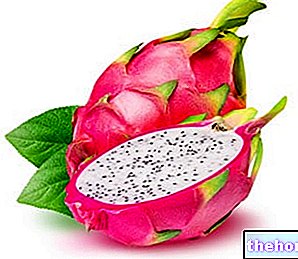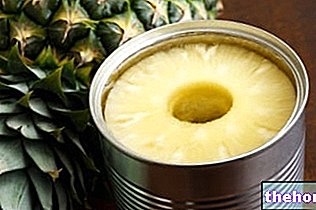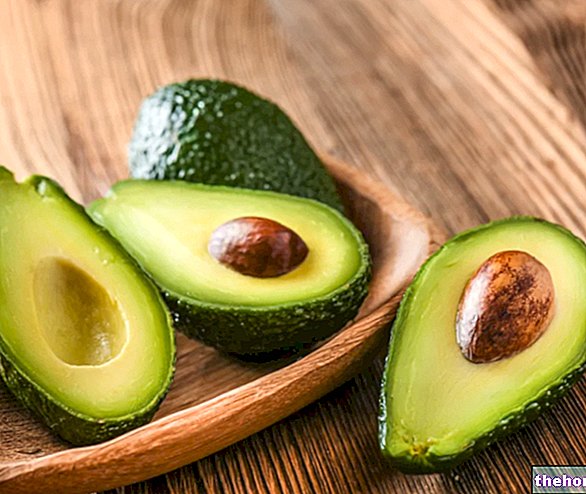Curiosity
They speak of her as a forgotten fruit: the quince, which boasts a literally legendary past, undergoes a present that is unfortunately far less interesting. Legend has it that the quince represented the emblem of Venus, a symbol of good luck and fertility in marriage banquets at the time of the Gods.

Quince: general information
In botanical terms, quince is Cydonia oblonga or Amygdalus persica, belonging to the Rosaceae family (Pomoidae subfamily). Quince is a sort of hybrid between pears and apples: not surprisingly, the varieties of fruit characterized by an apple shape are called quince apples, vice versa, the elongated characteristic attributes to the fruit the term pear quince.
The quince is native to the Caucasus area and Asia Minor, and is still widespread in the countries bordering the Western Mediterranean and in China.
Currently, in Italy it is a little-known fruit: production has undergone a drastic contraction since the 1960s.
The tree reaches heights generally between 4 and 6 meters, and is grown mainly for its fruits, quinces, in fact: the fruits - which are actually false fruits - are called knobs and have variable dimensions with an asymmetrical shape. Particular is the hair that surrounds the pericarp: the thick hair disappears when the fruit has reached maturity.
Quince seeds, often numerous, have a polygonal shape and are piled up, almost glued, by a mucilaginous film that unites them.
The pulp, compact and firm, is astringent and acidulous: strictly speaking, the fruit is hardly eaten fresh. However, the flesh of the fruit is very rich in pectins, which makes quince particularly suitable for the preparation of jams and as a thickener.
The flowers, skilfully displayed by the plant in early spring, are white and pink, and have 5 petals. The leaves, on the other hand, are simple, alternate and covered with a velvety layer of fine hair.
The quince plant is well suited to poor soils: the tree only requires good drainage and does not like very calcareous soils.
Food uses
As we have seen, the fresh consumption of quinces has been supplanted by that of sweeter and juicier apples (Malus communis). Precisely due to the strongly astringent and acidic characteristics of the pulp, quince apples are mostly used in the kitchen as a thickener for jams, thanks to the richness in pectins: as Tradition teaches, in compliance with ancient conservation techniques, the quince is still exploited. also for the preparation of mustards, liqueurs, spirits in general and jellies. The Cotognata is a particular quince-based jelly, typical of the town of Codogno (Lodi).
The leaves cannot be eaten since - as we will see - they contain toxic substances.
Flavor of quince
The sour and not very sweet taste of quince does not depend on the absence of sugars, but rather on the presence of the same in the form of long chains. With the heat treatment - therefore through the cooking of the quince - the long carbohydrate chains are fragmented, therefore the mass takes on a sweeter and more intense flavor, releasing a pleasant smell, very similar to honey.
Quince marmalade
Problems with playing the video? Reload the video from youtube.
- Go to the Video Page
- Go to the Video Recipes Section
- Watch the video on youtube
Quince: nutritional properties
Quince apples provide only 26 Kcal per 100 grams of product, equivalent to 108 Kjoules;

Quinces are a source of vitamins (especially A, C, B1 and B2) and mineral salts, including potassium, phosphorus, sulfur, calcium and magnesium.
Therapeutic properties
If, on the one hand, quince is marginalized in the kitchen, in phytotherapy its importance is still appreciable.
Previously we have seen that the dried leaves of the quince are toxic, due to the presence of amygdalin; however, in the past, the decoction of dried leaves was exploited for its anti-helminthic properties.
Due to its positive gastrointestinal function, quince is considered a cure-all in all respects: it boasts tonic, astringent and anti-inflammatory properties of the digestive system.
The tannins contained in the quince are able to protect the mucous membrane of the intestine.
Quince, like all apples, contains organic acids, including malic, useful for promoting digestion.
Consumed cooked, quince has a marked laxative property, stimulating and promoting intestinal motility thanks to the generous presence of fibers and pectins.
In cosmetics, quince is used for seeds which, as we have seen, are agglomerated thanks to a mucilaginous layer that unites them: the mucilages exert an "appreciable protective activity against skin dehydration, as well as counteracting the onset of wrinkles.
It also seems that quince is a good natural remedy for coughs and sore throats (in the form of decoction or maceration) and loss of appetite.
Quinces in brief »
Other Foods - Fruits Apricots Sour cherries Cashews Pineapple Watermelon Orange Avocado Banana Persimmon Persimmons Apple Chestnuts Cedar Cherries Coconut Watermelon Dates Feijoa Fig of India Figs Strawberries Berries Passion fruit (Maracujà, Granadilla) Jujube Kiwi Raspberries Coconut milk Lemons Almond milk Mango Apples Quinces Pomegranate Melon Blackberries Mustard Medlar Olives Taggiasca Olives Fermented Papaya Pears Peaches Plantains (Cooking Bananas) Pomelo Grapefruit Pink Grapefruit Plums, prunes Fruit juices and fruit juices Grape juice Plums Grapes Sultanas and Raisins OTHER ITEMS FRUIT Categories Food Alcoholics Meat Cereals and derivatives Sweeteners Sweets Offal Fruit Dried fruit Milk and derivatives Legumes Oils and fats Fish and fishery products Salami Spices Vegetables Health recipes Appetizers Bread, Pizza and Brioche First courses Second courses Vegetables and Salads Sweets and Desserts Ice cream and sorbets Syrups, liqueurs and grappas Prepare Basic tions ---- In the kitchen with leftovers Carnival recipes Christmas recipes Light diet recipes Women's, mom's and dad's day recipes Functional recipes International recipes Easter recipes Gluten-free recipes Diabetic recipes Holiday recipes Valentine's Day recipes Vegetarians Protein recipes Regional recipes Vegan recipes




























